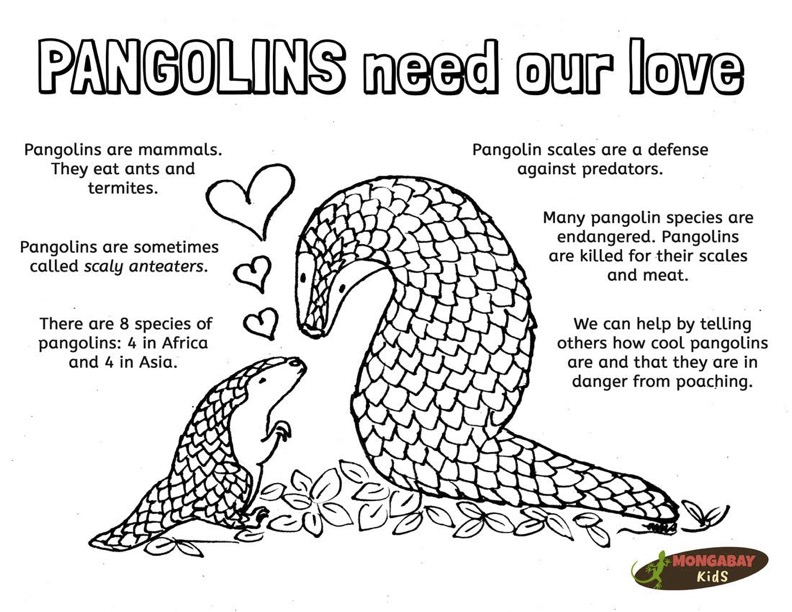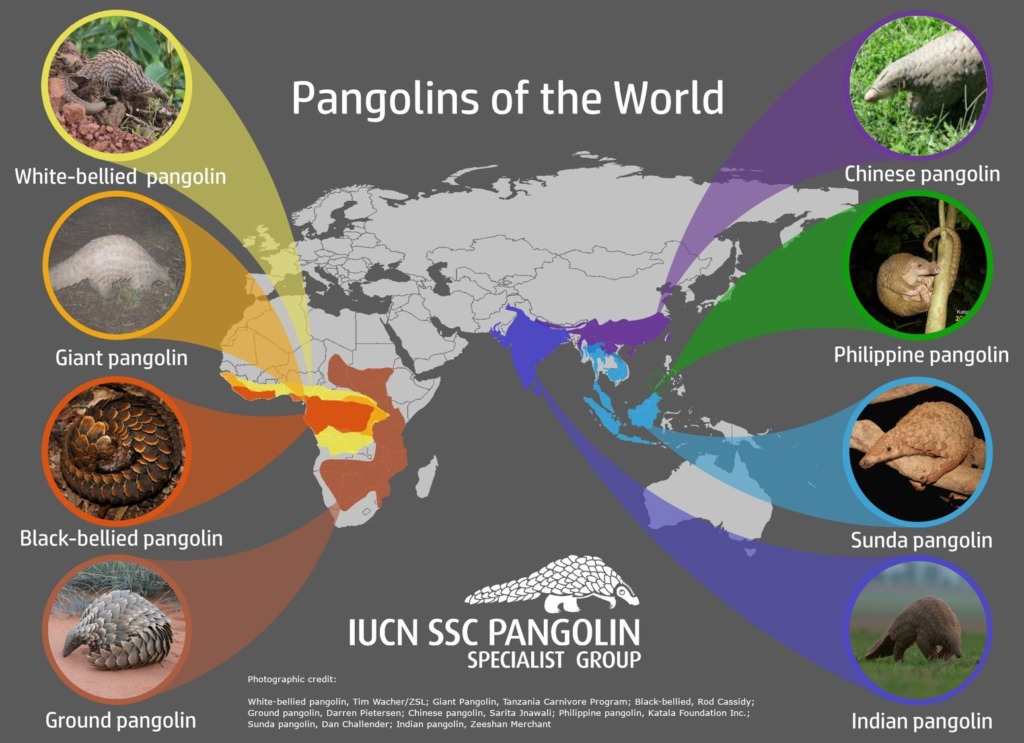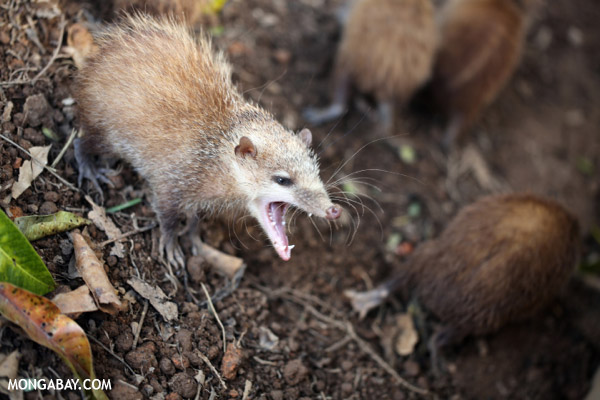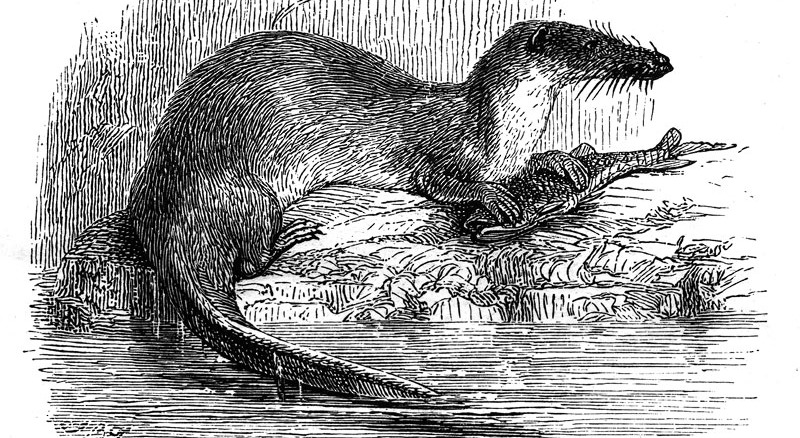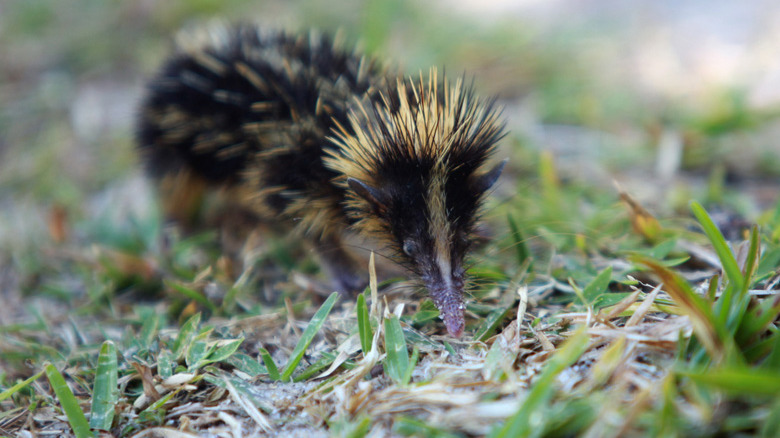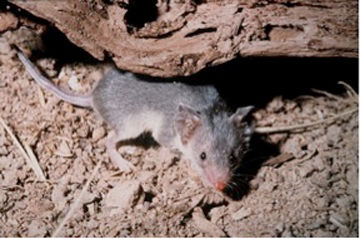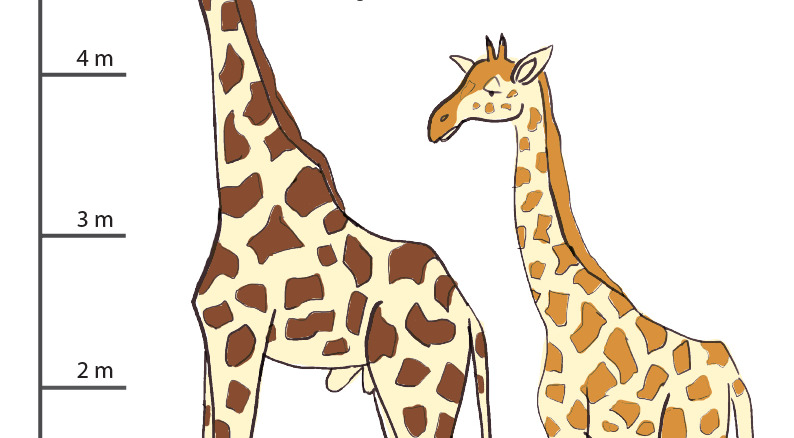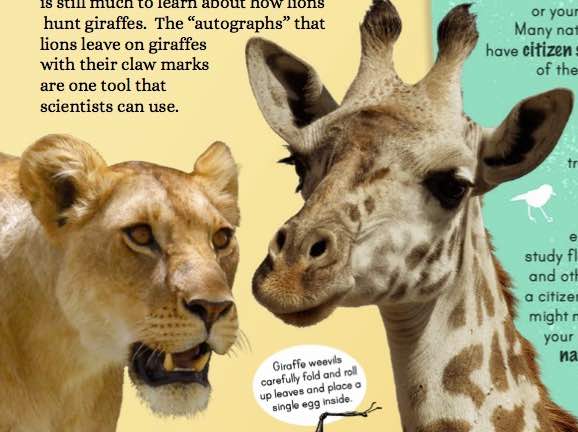What would happen if nature threw a scaly dinosaur and a koala into a blender and spit the result back out to live in the forests and grasslands of Africa and Asia?
The result might look like a pangolin:
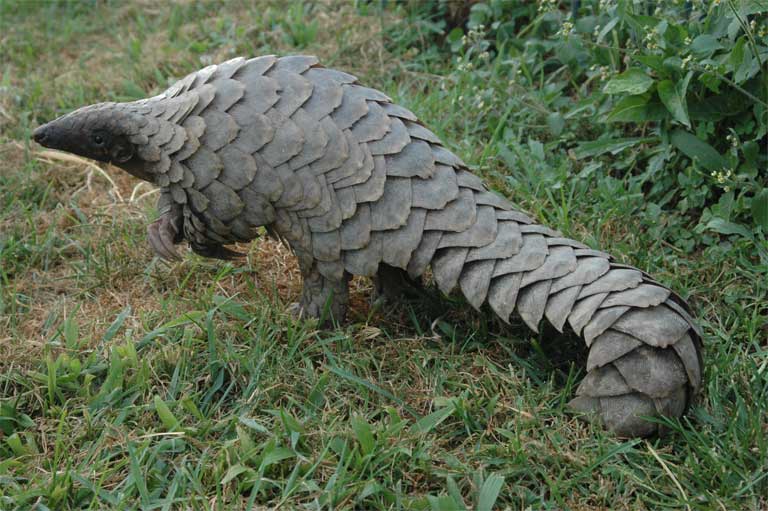
A pangolin. Photo credit: Tikki Hywood Trust.
Pangolins are adorable mammals that are covered in scales. The scales are made of keratin, the protein that makes up hair, nails, and claws. Pangolins are the only mammals covered in scales, and those scales are causing massive problems for their survival.
There are eight species of pangolins, four in Asia and four in Africa. All species of pangolins lead solitary and quiet lives in tropical forests and savanna habitats. Pangolins are only together when a mother is raising a baby or when a male and female come together to mate.
Otherwise, a pangolin spends its life looking for ants and termites to slurp up with its long sticky tongue. A pangolin’s tongue can be as long as its body: 40 cm (16 inches) or longer.
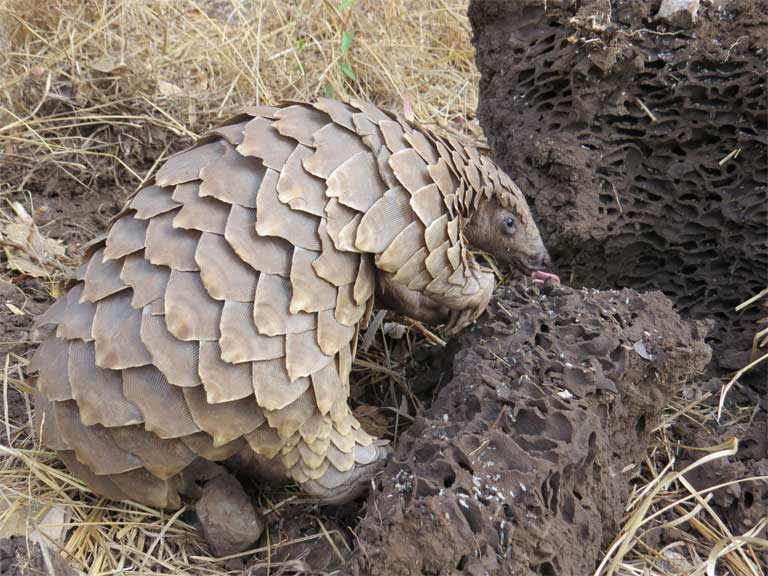
Pangolins use their sharp claws to dig into termite mounds and ant nests, then scoop up the insects with their tongues. Photo credit: Tikki Hywood Trust.
Pangolins are nocturnal. Because pangolins are solitary, nocturnal, and live in hard-to-access habitats, wild pangolins are not well studied by biologists. Even animal lovers and zoo visitors may not know about pangolins. Pangolins historically do not adapt well to living in captivity.
Despite living quiet lives outside of our public awareness, people still threaten the survival of all eight species of pangolins. In China and Vietnam, pangolin meat is considered a delicacy. The scales which make pangolins unique among mammals also make them desirable for traditional medicine in some parts of the world, especially in China.
Pangolin scales are thought to have powers to help cure cancer, asthma, and acne, according to the 1989 edition of the Chinese Materia Medica (the guide to traditional Chinese medicine). Medical science has not found that pangolin scales have medicinal value. Pangolin scales are only made of keratin – they presumably have the same powers as hair and toenails do to cure cancer, acne, and other ailments that they are used for.
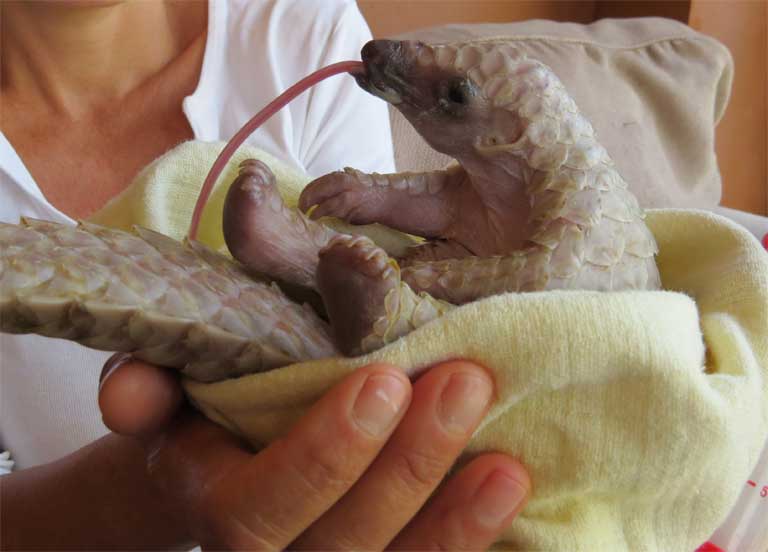
In most pangolin species, the tongue is longer than its body, as seen here with this pangopup. Photo credit: Tikki Hywood Trust.
On paper, pangolins are protected animals in much of their range across Africa and Asia. However, there is still a massive illegal trade in pangolins and pangolin body parts. In Asia, local populations of pangolins have gone extinct in many areas. In Africa, pangolin populations are decreasing due to poaching.
In the past decade, at least one million pangolins have been taken from the wild and killed for their meat and scales. Pangolins do not have enough babies to replace the ones poached from the wild. This is why all eight pangolin species are in danger of going extinct. Many pangolin species are officially endangered.

The pangolin rolls itself into a tight ball, providing a great defense against tigers, but not traffickers, who pick up the animals and drop them in a bag. Photo credit: Tikki Hywood Trust.
People are working to stop the illegal wildlife trade that empties forests of their pangolins across Asia and Africa. People are working to stop the demand for pangolin meat and scales.
One of the biggest conservation problems for pangolins is that not enough people know about pangolins and how cute, weird, and wonderful they are. Anybody who wants to help pangolins can do so by helping spread the word that they exist. Let others know that pangolins are endangered because of the scales that make them unique, and that people need to stop poaching them.

Baby pangolins travel on their mother’s backs. Photo credit: Tikki Hywood Trust.
Check out this episode of Candid Animal Cam about the Sunda pangolin:
https://kids.mongabay.com/meet-the-sunda-pangolin/
Learn and do!
Read more about pangolins in this article by Sharon Guynup on Mongabay.com:
Elisa Panjang studies pangolins in Malaysia. Read the interview with Elisa on Mongabay.com:



